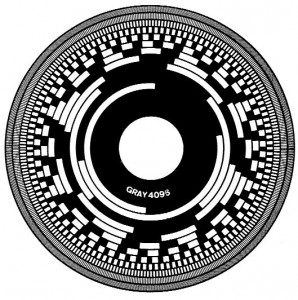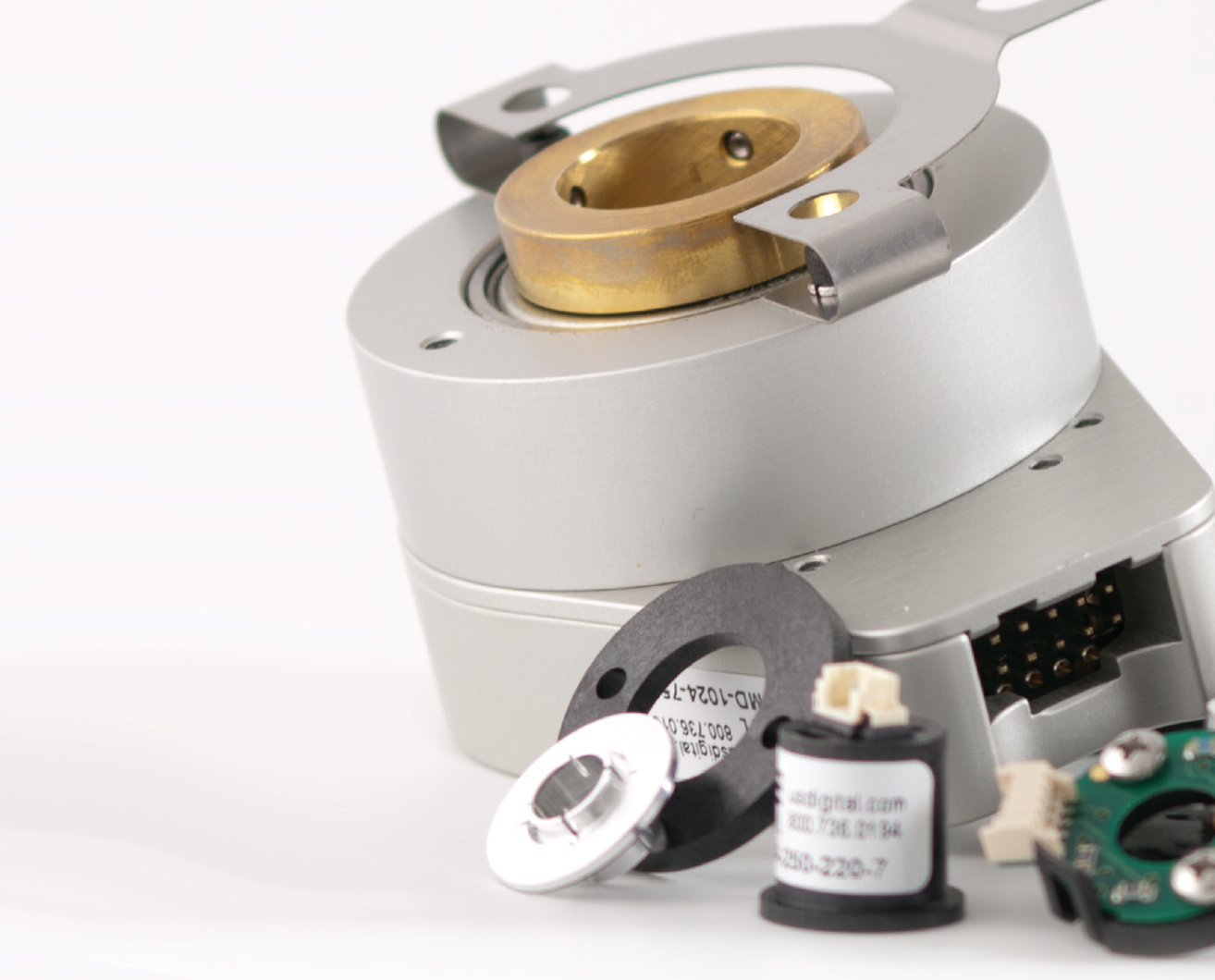Rotary encoders track speed and position. Absolute and incremental encoders both do this, but operate differently and have different methods of implementation.
Rotary incremental encoders work by generating a series of pulses during movement. The encoder disc (sporting marks or slots) attaches to a power-transmission shaft, and a stationary pickup device mounts nearby. When the shaft and disc turn, the pickup tracks the motion to output the relative position. Such encoders generally supply square-wave signals in two channels that are offset from each other by 90° — in other words, out of phase by 90°. Each increment of rotation spurs an output signal.

Note that rotary incremental encoders begin counting from zero each time the encoder powers up, and electronics store the data in an external buffer or counter. This is true regardless of where the shaft actually is radially. As such, incremental encoders must always come back to a reference point. This must occur both when the machine initially starts and whenever something interrupts its power supply. Here, battery backups can help eliminate the need for re-homing after shutdowns. Incremental encoders are generally simpler and cheaper than absolute encoders.

Absolute encoders have an encoder disc (sporting marks or slots) on a power-transmission shaft and a stationary pickup, but the disc marks output a unique code for each shaft position. Absolute encoders are either single-turn or multi turn encoders. Single turn absolute encoders can verify position within a single turn of the encoder shaft. This makes them useful for short travel situations. In contrast, multiple-turn absolute encoders are better for more complex or longer positioning situations.
Engineers generally classify absolute encoders by the number of their output bits, which correlates to the number of the disc’s tracks—and the maximum rotary angle the encoder registers. More after the jump.

Absolute rotary encoders have the advantage of non-volatile memory. That is, they do not lose track of positioning even when power fails. So even if something moves the machine shaft when power is off, an absolute encoder keeps track of the rotary-position change when the machine powers on again. Usually, electronics store this information as binary code, ideally Gray binary code. Absolute rotary encoders can operate point-to-point as well. They are useful in situations where safety is a concern, because they position whenever machines power on. Immunity to electoral noise is another benefit. One caveat: absolute rotary encoders are generally more expensive than incremental encoders. However, the cost of absolute encoders has steadily decreased over the last decade, and that’s driven steady increase of their use.
For more information about absolute and incremental encoders, read:
What are Absolute Encoders? Technical Summary for Motion Engineers
What are Incremental Encoders? Technical Summary for Motion Engineers
Manufacturer Fraba Posital on the two encoder types
Rockwell Automation’s online library of encoder information
PDF: Danaher Industrial Controls Reference: Dynapar Encoder Handbook


Leave a Reply
You must be logged in to post a comment.